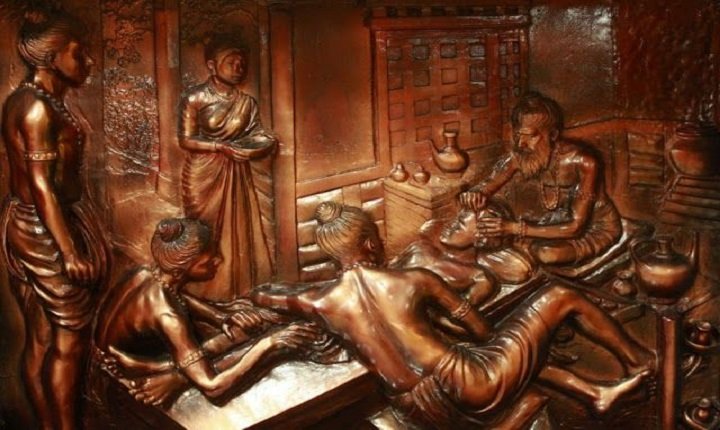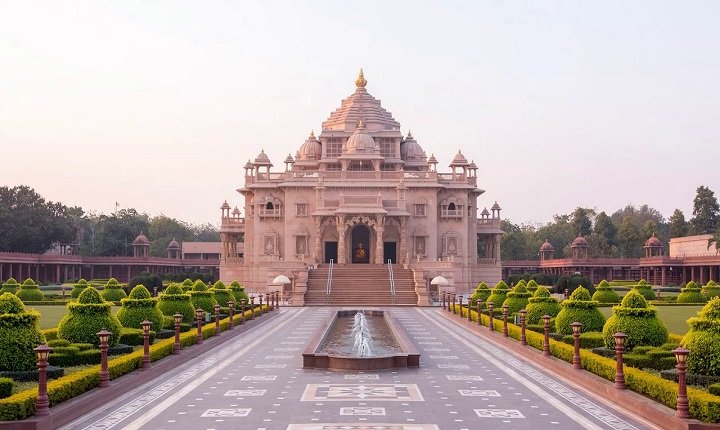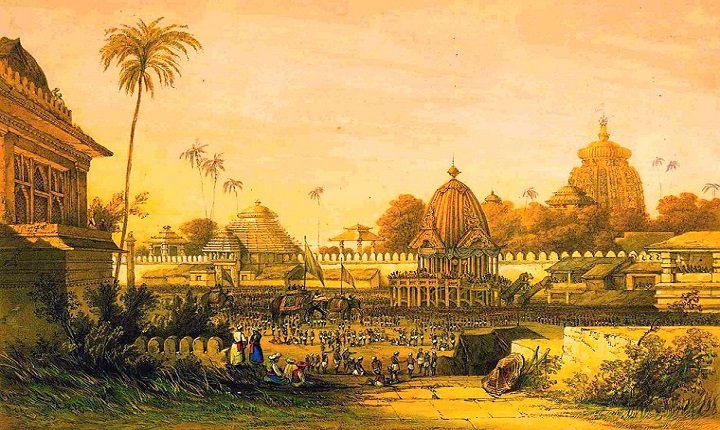
Ancient Indian Technology was full of astonishing disclosures and headways, particularly in the field of innovation. Whereas nowadays we think of innovation as computers, smartphones, or cars, the individuals of old India concocted apparatuses and methods that made their lives simpler and impacted social orders around the world. From building tough structures to making frameworks that made strides wellbeing and farming, the advances of antiquated India were exceedingly progressed for their time.
In this web journal, we’ll investigate a few of the key accomplishments of antiquated Indian innovation, counting designing, medication, science, and more. You’ll see how these innovations made a difference individuals back at that point and proceed to rouse us today.
Engineering Wonders of Antiquated Ancient Indian Technology

1. Progressed City Arranging and Architecture
The persons of antiquated India, specially in the Indus vale nation (around 3300–1300 BCE), were able in city arranging. Cities like Mohenjo-Daro and Harappa were build with grid-like formats, which imply their infrastructure were organized in a very arranged way.
This kind of arranging made it simple for individuals to explore the city and for water and squander frameworks to work effectively.
They moreover made a few of the most punctual seepage and sewage frameworks in the world. These frameworks were planned to keep the city clean, and a few parts of these frameworks are still obvious nowadays! Antiquated Indian planners utilized prepared bricks that kept going longer than straightforward mud bricks, and they indeed built multi-story homes. This level of city arranging and building wasn’t seen in numerous other antiquated civilizations, making it a interesting include of old India.
2. Dominance in Metallurgy
Metallurgy, the discipline of effective with metals, was another region where very old Indians surpass expectations. One famed illustration is the push article of Delhi, which stand over 23 feet tall and has not rusted essentially in over 1,600 a long time! This rust-resistant ironwork show the talent of aged Indian metallurgists, who knew how to make hard metal objects that have stand the test of time.
early Indians besides worked with other metals, counting bullion, gray, and figure. They were able to make complex gems, weapons, and devices. Their information of metalworking was so progressed that it impacted other civilizations through exchange, permitting their methods to spread over the world.
Medicine and Health of Ancient Indian Technology
1. Ayurveda: Antiquated Indian Medicine
Ayurveda, which imply “information of life,” is one of the most specialist healing frameworks in the planet, date back thousands of a wide time. The old Indian writings, known as the Vedas, hold many references to Ayurvedic hone. Ayurveda centered on utilize characteristic herb, flora, and minerals to treat diverse sicknesses. Ayurvedic professional accepted in adjust the corpse, brain, and soul to do generally wellbeing and well-creature.
One of the most eminent old Indian specialist, Sushruta, is known as the “father of surgery.” Sushruta composed a point by point pleased called the Sushruta Samhita, which show various surgeries and therapeutic methods. This incorporate strategies for treat breaks, expel tumors, and really drama plastic operation, such as remaking nose.
2. Yoga: Wellbeing Past Medicine of Ancient Indian Technology
Yoga, another old Indian hone, was created as a way to keep both the body and intellect solid. In spite of the fact that it’s frequently seen as work out nowadays, yoga was at first a combination of physical postures, breathing works out, and reflection. These hones made a difference antiquated Indians oversee stretch, move forward adaptability, and keep up mental focus.
Yoga has developed gigantically well known around the world and is presently practiced by millions of individuals. Its wellbeing benefits, such as decreasing push and expanding physical quality, proceed to be recognized globally.
Mathematics and Astronomy
1. The Concept of Zero and Progressed Mathematics
The very old Indian mathematician Aryabhata, who live around 476–550 CE, made main commitment to skill. One of the nearly all notable was the idea of zero, which changed how calculation were performed.
Without zero, it would be much harder to perform math and make complex calculations. This breakthrough in math spread to other parts of the world and remains a essential portion of science today.
Aryabhata and other old Indian mathematicians too created the decimal framework, which is the premise of our number framework. They made progressions in polynomial math, geometry, and trigonometry, which are fundamental for cutting edge building, material science, and technology.
2. Early Astronomy
Ancient Indians were gifted stargazers and had a profound understanding of the developments of planets and stars. Aryabhata made calculations approximately the Earth’s revolution and circle around the Sun long some time recently Western researchers did. He moreover recommended that the Soil was circular, not level, a truth that got to be more broadly acknowledged centuries later.
Indian space experts utilized point by point star charts and created precise calendars based on their perceptions. This made a difference in agrarian arranging and devout celebrations, appearing how closely they connected science with every day life.
Agriculture and Nourishment Ancient Indian Technology
1. Progressed Water system Techniques
Ancient India’s victory in farming was generally due to its progressed water system frameworks. The individuals created different strategies to coordinate water from waterways and streams to their crops. They utilized strategies like wells, canals, and tanks to collect and store water, which was especially vital amid dry seasons.
These water system strategies made a difference ranchers develop sufficient nourishment to bolster expansive populaces and permitted distinctive crops to be developed all through the year. These strategies of water preservation and administration proceed to be profitable, particularly in ranges with restricted rainfall.
2. Maturation and Nourishment Preservation of Ancient Indian Technology

Ancient Indians too had a profound understanding of nourishment conservation methods, especially maturation. Maturation permitted them to make nourishments that may final longer, which was significant for capacity and travel. They made aged nourishments like yogurt, pickles, and liquor, which were both delicious and nutritious. Nowadays, numerous of these nourishments are still delighted in and have gotten to be well known worldwide.
Conclusion
The advances and disclosures of old India have cleared out a enduring affect on the world. From city arranging to pharmaceutical, science, and agribusiness, the information created in old India laid the basis for numerous of the progressions we appreciate nowadays. Their accomplishments in science, especially the concept of zero, and their all encompassing approach to pharmaceutical through Ayurveda have both molded advanced practices.
Ancient India’s story appears us that inventiveness and advancement are ageless. By learning from the past, we can pick up experiences into the advances that moved forward lives thousands of a long time prior, advertising motivation for the future. If you’re interested in finding more approximately the history of innovation, investigating old civilizations like India is a awesome put to begin!
FAQs:
Q: What are a few cases of antiquated Indian developments that we still utilize today?
Some antiquated Indian innovations that we still utilize incorporate yoga for physical and mental wellbeing, the concept of zero in arithmetic, and Ayurvedic hones that center on normal mending. Indeed progressed metallurgy, seen in the Press Column of Delhi, has propelled advanced researchers in fabric science.
Q: How did old Indian innovation impact other civilizations?
Ancient India was a center of exchange and social trade, so its developments in arithmetic, pharmaceutical, and design traveled to other civilizations through dealers and researchers. The decimal framework and zero concept, for case, spread from India to the Islamic world and at that point to Europe, essentially affecting present day mathematics.
Q: Was surgery practiced in old Ancient Indian Technology?
Yes, surgery was practiced in antiquated India. Sushruta, an old Indian specialist, performed complex surgeries, counting plastic surgery, and composed approximately these methods in his content, Sushruta Samhita. His work laid the basis for surgical strategies that are still utilized today.
Q: What was the reason of the Press Column of Delhi, and why is it famous?
The Press Column of Delhi is a tall metal column built around 1,600 a long time prior. It’s popular since it has not rusted in spite of being uncovered to rain and wind. This appears that old Indian metallurgists had progressed abilities in working with metals, making it a image of their mechanical expertise.
Q: How did antiquated Indians utilize cosmology in their day by day lives?
Ancient Indians utilized cosmology for different purposes, such as making precise calendars, anticipating shrouds, and deciding the best times for agrarian exercises. Their perceptions made a difference them get it planetary developments and time cycles, which were basic for devout and social events.